Valle delle Ferriere Hiking: the Natural Reserve on the Amalfi Coast
Valle delle Ferriere
Introduction
Valle delle Ferriere is one of the most popular hikes on the Amalfi coast after the famous Sentieri degli Dei. However, both are on the Amalfi Coast, but these two hikes offer entirely different experiences. The Path of Gods is well-known for breathtaking views and high-altitude paths, while Valle delle Ferriere is the easier of the 2 popular routes—a mysterious journey through a stunning valley and a less challenging hike if you have vertigo.
Highlight of The Valley
The National Park and The Natural Reserve
Best time to Visit
Valle delle Ferriere from Pontone
Valle delle Ferriere From Amalfi
The Riserva Naturale Orientata
Flora and Fauna
Hire a Guide
Ferriere Valley Highlights
The valley preserves some incredible old plant species, the so-called ‘living fossils.’ This lush valley is packed with natural wonders and ruins. Many old buildings in the valley hold historical significance in the local industries. A place to captivate your interest—both history enthusiasts and nature lovers will find something for themselves here. Witness nature reclaiming abandoned factory walls, creating picturesque ruins in the forest.
The subtropical microclimate feels hot and humid, with many waterfalls and water streams. A prehistoric wonderland nestled deep in the mountains. All of this lies just behind the town of Amalfi, so step into the adventure with us on this spectacular hike in the valley!
Understanding Valle delle Ferriere and the Natural Park
The valley is called Ferriere Valley due to the historical presence of ironworks in the area. The Italian word “Ferriere” translates to Ironwork in english (ferrier means blacksmith).
There are three main areas: the lower circuit, the upper circuit, and the small restricted natural reserve area. The restricted area is the heart of the valley, home to the most interesting species. This reserve has specific opening times, typically from 10 AM to 3 PM, and an entry fee of 5 euros. It is possible to complete the upper or lower circuit hikes outside opening times without visiting the reserve area. Of course, I recommend visiting the restricted part for a complete and immersive experience.
The most popular way to do this hike is to take the lower circuit from Pontone to Amalfi. Be sure to reach the natural reserve and explore its beauty within the designated visiting hours. This way, you can make the most of your journey through Valle delle Ferriere and fully appreciate its natural wonders.
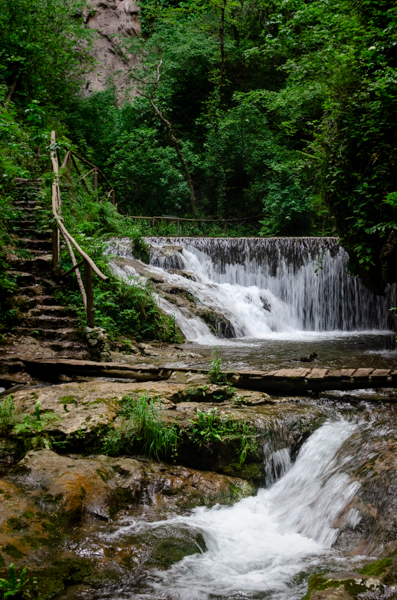
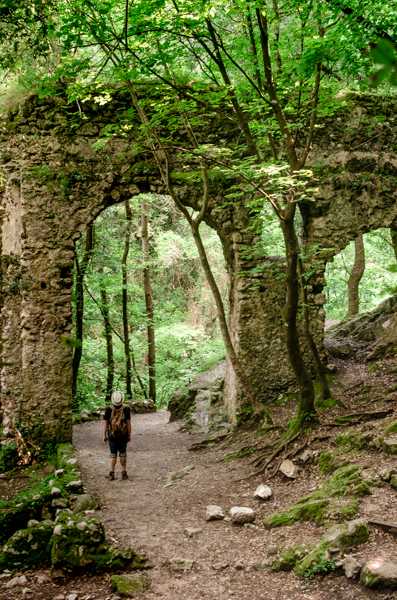
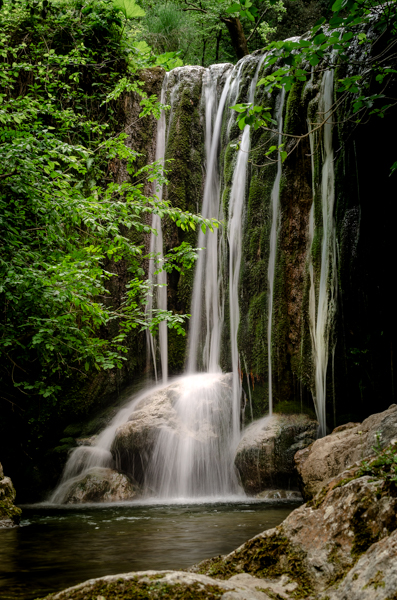
Lower Circuit vs. Upper Circuit
The lower circuit is the shorter and easier hike, making it a popular choice for many visitors. One of its main advantages is its simple accessibility, as it can be reached on foot from the town of Amalfi. The path is between Amalfi and Pontone and leads to the entrance of the restricted natural reserve area from both villages. This trail, in general, involves less physical exertion. So the hike would suit for a wider range of fitness levels.
The lower circuit typically follows a well-defined path with gradual inclines and straightforward terrain, making it more manageable for most hikers. Can be completed as a half-day trek and easily incorporated into a one-day visit of Amalfi.
The upper circuit offers a longer and more challenging route, but it can reward you with stunning panoramic views and a more secluded experience. Due to its longer duration and potentially more strenuous terrain, so it requires more planning and a full-day commitment.
Seasonal Variations: When to visit the Valle delle Ferriere?
The hike is worth doing all year round, but the environment is humid in the valley. It looks very different during colder months than in summer. Having visited the valley many times throughout the seasons, I found it much more delightful in spring. My first experience was during winter, and I found it a bit unfriendly with its darkness and misty atmosphere. But with each visit, I discovered its ever-changing beauty. Last spring, the waterfalls roared with abundant water. The valley is the best experience in its charming self particularly in the springtime. The deep parts of the valley are particularly shady and fresh, so bring a pullover in warm days too.
In Summer
The deep part of the valley is abundant with shade, has refreshing and pleasant climate, so this hike offers a great escape from the coastal heat even in peak summer. Consider hiking early in the morning or late in the afternoon to avoid the hottest hours, as not all the path is covered with shade. Typically the waterfalls have reduced water flow during the summer.
In the Winter Months
The valley can be cold and rugged, mysterious, and wet, and it might get muddy in late autumn and winter. This time of the year has its charms. The presence of fewer tourists is an opportunity to see the authenticity of the valley and observe more wildlife. One of my most vivid memories from my first winter visit was encountering locals collecting and transporting firewood with the help of mules. These agile and strong creatures were adorned with colorful and traditional attire, adding to the dreamy atmosphere of the valley. Such encounters with the locals are a possibility to glimpse into the age-old practices and traditions.
Spring and Autumn
The best times to visit as the weather is neither too hot nor cold for longer walks. It can be rainy, so bring a raincoat to stay dry and comfortable during your hike.
Need a guide or want to join a tour?
Step into the adventure of Valle delle Ferriere with confidence and make the most of your visit by choosing the guidance that suits you best.
Detailed Walkthrough: Lower Circuit and the Natural Reserve
Pontone to Amalfi – Step-by-step Guide
This guide provides landmarks and directions for the hike from Pontone to Amalfi, along with estimated walking times and distances.
The map below shows the section from Pontone to the entrance of The Riserva Naturale Orientata (RNO).
It took us 1 hour and a half, including a half-hour visit to the Riserva with the Cascata Alta (Tall Waterfall).
We walked at a comfortable pace and took our time. The time we spent with active walking was 59 minutes.
The distance is approximately 3 km.
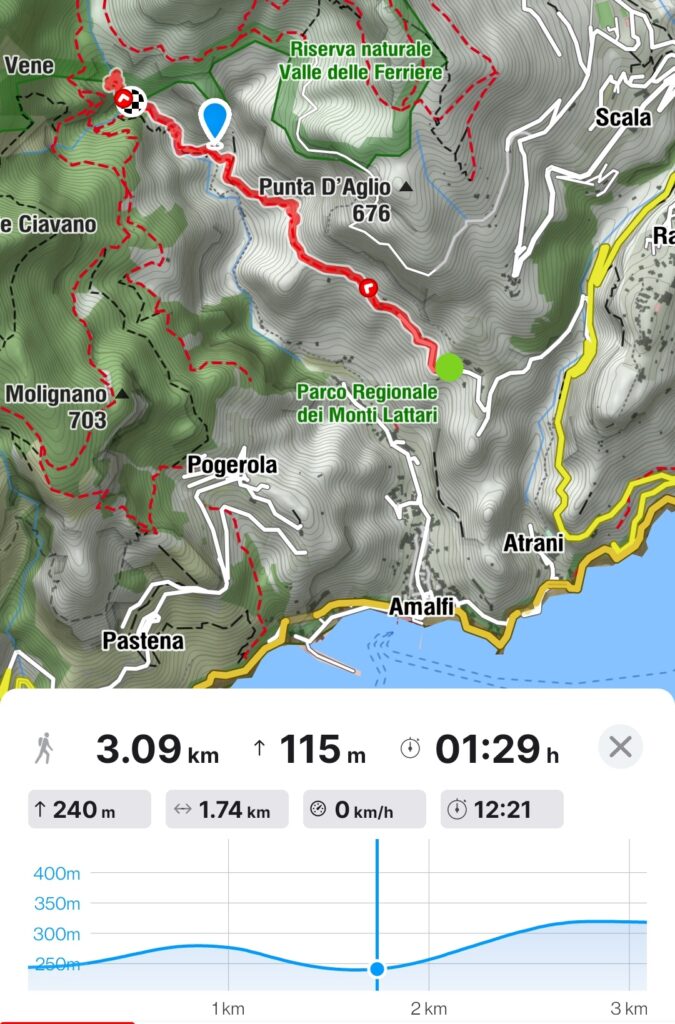
First Section: From Pontone to the Crossroad Point of the Iron Ruins
The path is found on the CAI site under the name of:
CAI 323A: Pontone al rudere della Ferriera
Distance: 1.7 km
Trailhead: Piazza San Giovanni, Pontone (Scala)
This point is marked with blue on the map above.
Intersection: Rudere delle Ferriere
In Italian, ‘Rudere delle Ferriere’ means the ‘Ruins of the Ironworks.’ On our map, you can find this location marked with a blue marker.
Long ago, this place was used to extract iron from stones brought from Isola d’Elba. It dates back to the fourteenth century and was close to the port of Amalfi. Nevertheless, Iron extraction stopped in the mid-18th century, the traces of the industry are still here. However, nature has since begin reclaiming the valley. Now, lush vegetation covers the stone walls, creating picturesque landmarks.
Coming from Pontone you can directly hike from this point towards Amalfi, but doing so means missing out on the heart of the Valley. For the entrance of the Riserva Statale follow the directions upstream.
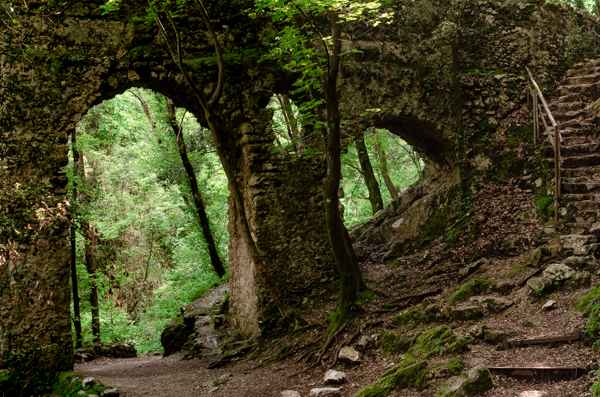
Continuing Towards the Entrance of the Natural Reserve (RNO)
The path leads over the water stream and you can cross an small wooden footbridge. Proceed on the trail upwards, near the river and you will soon reach the Intersection: 325a: Acquedotto. Here you will see the Aqueduct that carries water from the Canetto River to supply the hydroelectric power plant. There is a small yet charming picnic area here, perfect for have a break and eating your snack. Also a drinkable water source is present.
This is where you will see the fenced area and the little bungalow, where you can enter the reserved area.
An officer would control your ticket. You can also by one here, if you don’t have one yet.
The Tall or Grand Waterfall
You can sneak a peek at the 25-meter-tall high waterfall from behind the fence, even outside of the regular opening hours. The waterfall is officially known as the “Canetto Waterfall”, named after the creek that feeds it.
Exploring the Natural Reserve inside the Ferriere Valley
Riserva Naturale Orientata (RNO)
The Ferriere Valley Nature Reserve, located at the end of trail 325, is a small area worth visiting. You can see the impressive Grand Waterfall and the ancient fern Woodwardia Radicans there.
There is an entry fee of 5 € per person to access the reserve.
This place is really special! An active time capsule, with living fossils that have survived the ice age and all the changes over time.
One of the highlights of the area is the fossilised moss wall: A constantly dripping and living stalactite formation.
This protected hidden heart of the valley is an incredible place, with rich biodiversity and diverse microclimate.
Particularly lucky people may encounter one of the two salamander species present in the area.
During our visit to the reserve, the ranger who checked our ticket made a great impression. He was very informative and helpful, and also spoke good English. The officer showed us the Woodwardia fern and he was knowledge about the reserve’s unique flora and fauna.
If you plan on visiting the Reserve, please allow at least 30 minutes for yourself to visit the area comfortably.
Useful information to Visit the Riserva Naturale Orientata (RNO):
Opening hours:
Weekdays: 10:00 AM to 3:00 PM
Saturday and Sunday: 9:30 AM to 4:00 PM
Ticket price: 5 Euro
Reach the RNO entrance on foot from Amalfi or the village of Pontone (approx. 1 hour walk). From Agerola, it takes at least 2 hours and 20 minutes to get there.
Flora and Fauna of The Valle delle Ferriere
The prehistoric fern: Woodwardia Radicans
One of the living fossils is the Woodwardia Radicans, a huge prehistoric fern.
This large fern can grove as high as 3 meters and was discovered in 1710 by botanist Micheli. The common name of this fern is European Chain Fern.
Although is rare it is possible to find this species in the Azores and in Crete too. This fern grows in subtropical areas.
In Italy, you can find it in the Campania and Calabria regions. This fern typically grows in steep slopes and the lower part of the gorge of a stream, in areas characterized by huge waterfalls.
The lastly discovered area of distribution is at The Savone delle Ferriere stream site. This is the third station of Woodwardia Radicans in the Campania region, and its northernmost location on the Italian peninsula. Interestingly, both locations are associated with “Ferriere” (meaning “ironworks”) due to the presence of iron factories powered by nearby waterfalls, which also provide the right air humidity necessary for the growth of these plants.
Source: Bulletin of Regional Natural History (BORNH) 30th April 2020, A new station for the endangered fern Woodwardia radicans (L.) Sm. (Blechnaceae) in Northern Campania (Italy), by Antonio Croce.
You can find other fascinating and uncommon ferns and plants, such as Pteris Cretica and Pteris Vittata.
Many of these ferns date back to 65 million years ago (yep, that’s around the time when the dinosaurs went extinct).
Pinguicula Hirtiflora
Pinguicula Hirtiflora is another fascinating “living fossil.” Its Latin name comes from “Little sticky thing,” and while its innocent appearance may deceive you, it is actually a carnivorous plant. The plant’s leaves have a sticky substance that allows it to capture and trap small flies and insects.


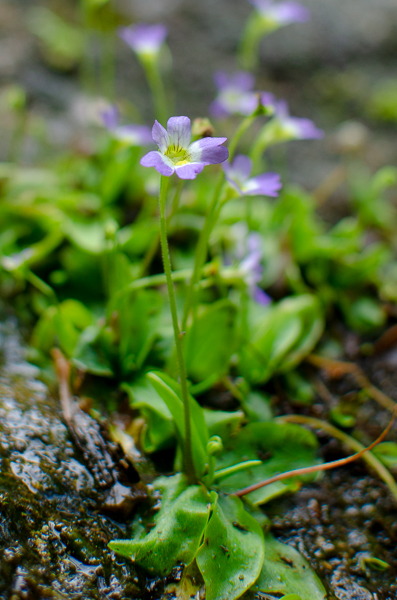
Images of Pinguicula Hirtiflora. I photographed them on the Amalfi Coast during another hike near Cava de’ Tirreni. You can see insects like mosquitoes being trapped on the sticky leaves.
Two salamander species are present inn the area. The first is the Spotted Salamander Ambystoma maculatum),known for its yellow drawings over a dark black body. These marking makes them easily identifiable. The second species is the Spectacled Salamander( Salamandrina perspicillata ),a rare find in the wild. This tiny creature measures less than 2 cm in length and is primarily active during the night. Because of this its challenging to observe. The markings resemble a pair of glasses, hence the name.
Getting to the Riserva from Amalfi
Look for the trail marked with cai number 325. The lower part of this trail is also known as Valle dei Mulini.
Officially the trail is called 325 Lower Trail of Valle delle Ferriere ( Sentiero basso di Valle delle Ferriere )
Where to start?
Walk up the main road in Amalfi until you reach the Paper Museum. From there, you’ll see signs pointing you in the direction of the trail Valle dei Ferriere.
How long is it?
The trail is approximately 3 kilometers long with a 300-meter elevation gain.
Once you’re at the Paper Museum, go towards the right. Then, take the staircase on the left, called Via Grade Lunghe. The path will lead you to the ancient paper mills area. Along the way, you’ll pass through rural areas with gardens. From the path, you can see the remains of Cartiera De Luca. Later, you will pass near Cartiera Amatruda (which is still working nowadays).The little restaurant Agricola Fore Porta is just on the path so you can’t miss it. The family owned place is very inviting; This spot could be a perfect place for a quick snack or lunch. Further up in the valley, are the ruins of Cartiera Lucibello-Confalone and the remnants of Cartiera Marino. There is also a still-functioning hydroelectric power plant on the trail.
If you start from Amalfi, I absolutely recommend visiting the Paper Museum for a guided and informative tour. It will help you better understand the area and the abandoned paper mills before you begin your hike. Please check out my detailed guide of the Town of Amalfi, for more information on museums, history and landmarks, not to miss.
Hire a Guide
The Valle delle Ferriere is not a challenging hike and is suitable for all ages. Don’t want to go alone? You can discover the beauty of the Valley with a local guide or join a tour.
If you prefer a company or seek in-depth knowledge about the history, ruins, and species, then consider hiring a guide. Find a well prepared local guide through my affiliate partner, Viator.
Let a knowledgeable guide illuminate your journey, making it a truly enriching adventure. Take the step towards a more immersive and rewarding experience – book your guided exploration today!
Fun fact: You might be surprised to know that the featured image on Viator for Valle Delle Ferriere is actually a stock photo made by me (yes, the same one that is the cover photo of this post), as I happen to be a photographer and used to do stock photography! It’s great to see that my stock photography is being used by Viator! As a photographer, it’s always a rewarding experience to see my work being used by reputable companies and websites.
